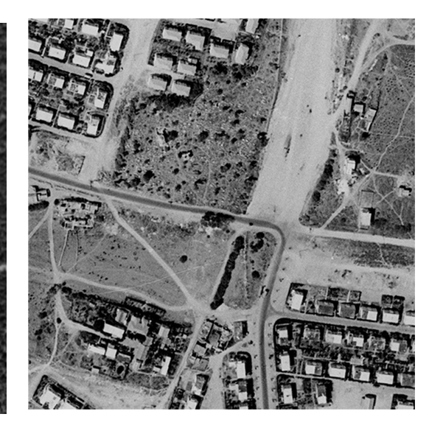Michal Baror | 125 Kibbutz Galuyot Road


The work’s starting point was three sycamore trees that grow on a traffic island in the middle of one of Tel Aviv’s busiest roads. From there, the artist Michal Baror embarked on a historical, spatial, photographic, and performative research, tracing the different incarnations of the three trees, linked to the political changes that have taken place in the area since the early 20th century.
What sights did the three trees witness? How has the space around them change over the years? What spatial role do they play today?
The work consists of several elements. The central and largest of these is the product of a performative action, where the artist walked along the traffic island and photographed it section by section. She then joined the photos into a 13-meter-long collagist image, taped to the museum’s floor. Three white blind spots along the island stand for the tree trunks, which the artist could not photograph in her survey of its terrain. The other elements of the work are displayed on the wall, and include three aerial photos dated 1944, 1956, and 1968, with the three sycamores at their center; a photo of the artist’s hand holding a miniature photo of a sycamore; and a reproduction of a painting by Reuven Rubin.
In the vein of her previous works, Baror wishes to look at the history we tell ourselves: Who writes it, who photographs it, and who holds it. Juxtaposing her own photographs with archival photos, she examines the space in new ways, through testimonies and traces that are often found on the sideline of the main narrative. Her works propose not to leave viewers out of the story, but rather to make them an inherent part of the meaning that the work produces.

